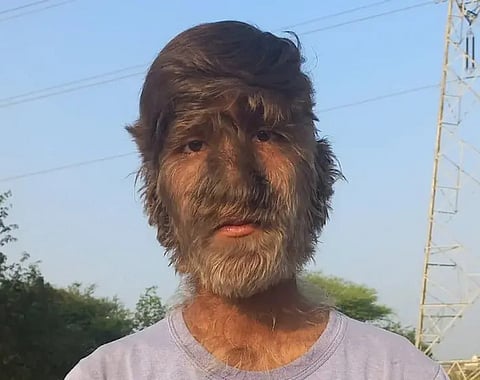
- Home
- NG Hindi
- India
- World
- Politics
- Sex & Relationships
- Entertainment
- Culture
- Lifestyle
- Economy
- Sports
- Sp. Coverage
- Misc.
- NewsGram Exclusive
- Jobs / Internships

Key Points:
18-year-old Lalit Patidar from Madhya Pradesh has a rare genetic condition called hypertrichosis, also known as “werewolf syndrome,”
The condition is extremely rare, with only about 50 documented cases worldwide since the Middle Ages, and has no permanent cure.
Despite challenges and social stigma, Lalit has embraced his uniqueness, becoming a digital creator with thousands of followers and inspiring many.
We live in a world with a lot of possibilities, and some just blow our mind. The case of the 18 year old from Madhya Pradesh, India is one such example. A boy named Lalit Patidar has a rare genetic condition known as hypertrichosis, popularly known as the ‘werewolf syndrome’.
He recently earned the Guinness World Record for having the hairiest face on a male. His face has an average of 201.72 hairs per square centimetre, with about 95% of it covered in hair.
The rare genetic or acquired condition is not due to hormones, like in puberty, but is a result of genetic mutation or side effects of certain conditions or medications when acquired. A person with the condition grows excessive hair all over the body, including the face. People with this condition often face social stigma and bullying in India, with comparisons to werewolves.
See Also: “We Are All Bisexuals”: Swara Bhasker’s Bold Claim Sets Off Social Media Storm
They are even called wolf boys or wolf girls. The hair can be removed through treatments such as waxing and laser hair removal but the process is quite expensive and needs to be repeated after a certain interval of time. There is no known permanent cure of it.
The condition is so rare that only about 50 cases of it have been documented worldwide since the Middle Ages. This makes him a ‘one in a billion’ individual. He faced several challenges growing up owing to his special appearance, but his confidence stood out in all.
He is now a digital content creator with over 108,000 subscribers on YouTube and 265,000 followers on Instagram, inspiring many. He shares his day-to-day life confidently. He once shared how his classmates initially feared him but later realized that he was not any different from them once they got to know him.
Many have suggested to Lalit that he should remove the hairs but he loves the way he looks and has no intention of changing his appearance. He has embraced his uniqueness confidently and, as a result, has gained international recognition for the same.
As the name suggests ‘werewolf syndrome’, it has no connection with any myths that prevail about werewolves; it is strictly a medical condition. Lalit’s case has inspired others to embrace one’s differences and unique traits, turning them into strengths. [Rh/SY/VS]
Also Read:
